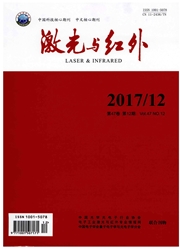

 中文摘要:
中文摘要:
为了研究半导体光电器件p-GaAs欧姆接触的特性,利用磁控溅射在p-GaAs上生长Ti厚度在10-50 nm范围、Pt厚度在30-60 nm范围的Ti/Pt/200 nm Au电极结构。利用传输线模型测量了具有不同的Ti、Pt厚度的Ti/Pt/200 nm Au电极结构接触电阻率,研究了退火参数对欧姆接触性能的影响,同时分析了过高温度导致电极金属从边缘向内部皱缩的机理。结果表明,Ti厚度为30 nm左右时接触电阻率最低,接触电阻率随着Pt厚度的增加而增加;欧姆接触质量对退火温度更敏感,退火温度达到510℃时电极金属从边缘向内部皱缩。采用40nm Ti/40 nm Pt/200 nm Au作为半导体光电器件p-GaAs电极结构,合金条件为420℃,30 s可以形成更好的欧姆接触。
 英文摘要:
英文摘要:
In order to study the ohmic contact property of semiconductor device,Ti / Pt / 200 nm Au structure was grown on p-GaAs by magnetron sputtering,the Ti thickness is 10 - 50 nm and the Pt thickness is 30 - 60 nm.The transmission line model was adopted to calculate the contact resistivity of Ti / Pt / 200 nm Au structure in different thicknesses of Ti and Pt.The impact of annealing parameters on ohmic contact was studied,and the mechanism that the metal shrinks from the edge of electrode at high annealing temperature was analyzed.The results show that the lowest contact resistivity is achieved when the thickness of Ti is about 30 nm,and the contact resistivity increases with the increase of Pt thickness.Ohmic contact is sensitive to annealing temperature,and the metal of electrode shrinks from the edge when the annealing temperature is 510 ℃.40 nm Ti /40 nm Pt /200 nm Au electrode structure can obtain better ohmic contact when semiconductor device remains 30 s at annealing temperature of 420 ℃.
 同期刊论文项目
同期刊论文项目
 同项目期刊论文
同项目期刊论文
 Investigation of the saturation characteristic and lifetime of the novel AlGaInP lightemitting diode
Investigation of the saturation characteristic and lifetime of the novel AlGaInP lightemitting diode Theoretical and experimental analysis of the effects of the series resistance on luminous efficacy i
Theoretical and experimental analysis of the effects of the series resistance on luminous efficacy i 期刊信息
期刊信息
